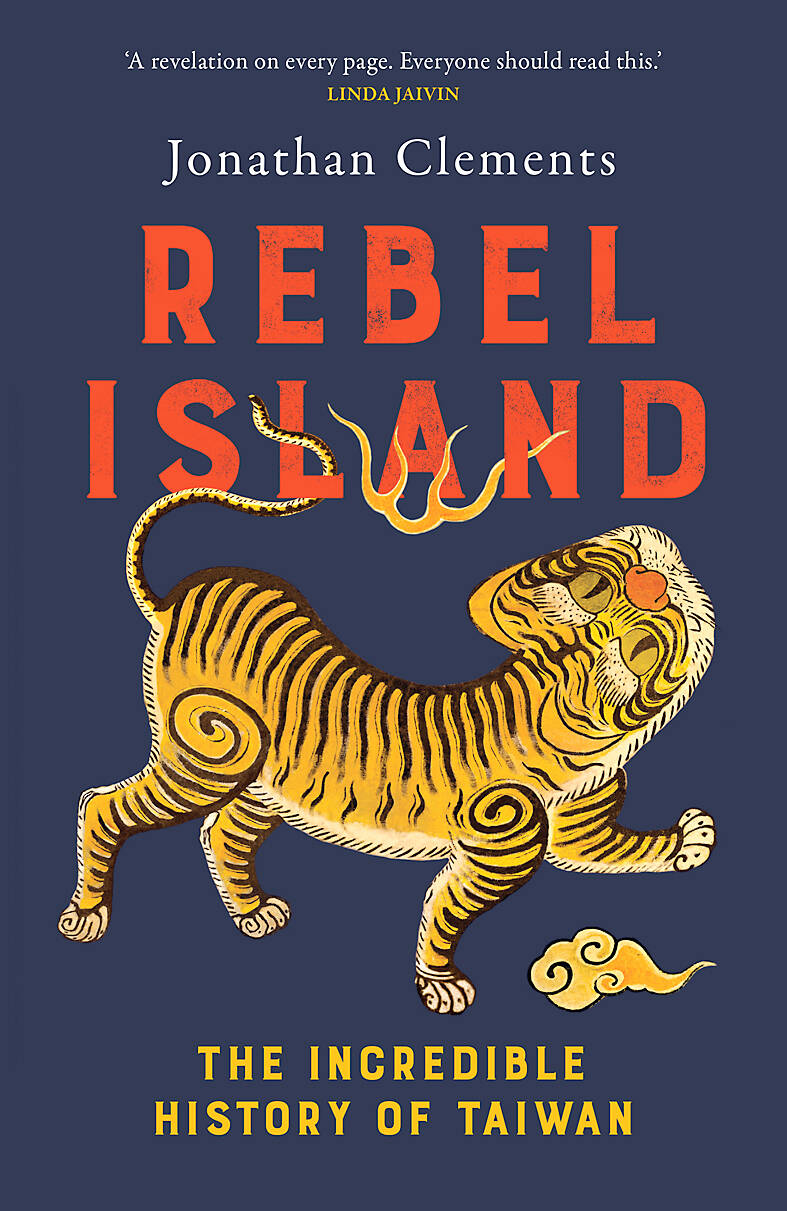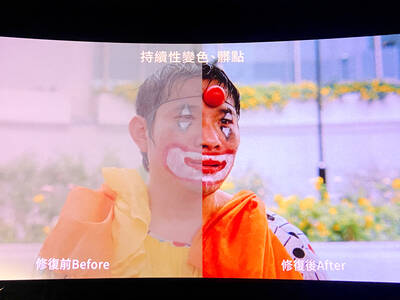When I saw the title of this book, I prejudged it. “Another writer who thinks ‘breaking away from China’ is the lens through which Taiwan must forever be viewed,” I thought.
That assumption was way off. Instead of dwelling on the island’s proximity to China, author Jonathan Clements delights the pro-Taiwan reader by pointing out in his preface how close Taiwan also lies to the Philippines and to Japan’s Yonaguni Island. But here he stumbles a bit. His assertion that “Japan, or some possession of it, is just as close as China” isn’t quite correct. Yonaguni (111km from the coast of Yilan County according to most sources, not 162km distant as Clements states) is nearer the main island of Taiwan than any PRC-controlled territory (130km away by some reckonings; Clements plumps for 160km). Accuracy would have been more impactful.
It’s clear that Clements — author of several books on Chinese and Japanese history — is keen to share what little is known about Taiwan’s earliest human inhabitants. And throughout this engaging book, indigenous perspectives are given due attention, despite early written accounts favoring outsiders’ versions of history. Before getting into the European incursions of the 17th century, he reviews the description of Penghu and Taiwan left by 14th century explorer Wang Dayuan (汪大淵) and later Portuguese experiences.

Notwithstanding the upbeat toponyms they bestowed on Pescadores and Formosa, Portugal’s interactions with Taiwan and its people didn’t always go well. After a Portuguese vessel ran aground near what’s now Tainan in 1582, the 300 survivors “spent a miserable three months on the beach, slowly assembling a smaller escape vessel from the debris. They subsisted on meager supplies of rice, and a few items of local game.”
Attacks by indigenous people thinned the survivors’ ranks, yet one of them — a native of the Philippines — stayed on and married a Siraya woman. Decades later, he identified himself to some of the first Dutch to reach the area. Engrossing episodes like this are why Rebel Island deserves your attention, even if you think you already have a good grip on Taiwan’s history.
As you’d expect of someone who’s written a biography of Cheng Cheng-kung (鄭成功, also known as Koxinga), the sections covering Dutch rule and the subsequent Kingdom of Dongning are thorough. But when Clements writes that “the Dutch are today generally remembered fondly on the mainland,” it isn’t clear if he means China or the main island of Taiwan. And I was surprised to read that, following the death of Zheng Jing (鄭經, Koxinga’s son and successor), “a new faction rose in opposition to Chen Yong-hua (陳永華).” Chen died eight months before Zheng.
Clements isn’t afraid to question the antiquity of certain traditions, be they folk ditties or other customs. He suggests that the Siraya practice of compulsory abortions for young married women was relatively new when it was noticed by disapproving Dutch missionaries. Drawing on musicological research, he points out that certain “timeless” songs aren’t half as old as many people assume.
Unfortunately, he shows no such skepticism when it comes to the apparent success of the Japanese colonial regime’s opium policy. Goto Shinpei, the colonial government’s first head of civilian affairs, recognized the size of the problem (6.1 percent of Taiwan’s population smoked opium) and saw a way to demonstrate “how a drug problem widespread in all China could be dealt with through the right measures.”
Goto “instituted a ‘gradual ban,’ forbidding access to opium for new users, but offering existing addicts a license to buy their supplies from a government monopoly.” The number of addicts fell by two thirds in 20 years, while the authorities raked in revenue — if we’re to believe the official numbers, that is. To my mind, this claim has always carried a strong whiff of propaganda. I’ve waited years for a historian to pick it apart; it looks like I’ll have to wait a bit longer.
Rebel Island’s coverage of the Japanese era includes two pages on Matreli (馬智禮), the first full-blooded Han Chinese known to have risen to a position of leadership in an indigenous tribe. Born in Fujian and adopted by a Puyuma clan in Taitung, he succeeded his father-in-law as chieftain in 1915. The Japanese used him as a mediator and peacemaker during disputes with and between indigenous groups.
In the wake of the massacre that is known as the 228 Incident, Matreli was “instrumental in pacifying the south on behalf of the Chinese Nationalist Party (KMT), appearing on the local radio to appeal for calm among the indigenous peoples.” Almost nothing has been written in English about this person, whose life story justifies a book-length biography.
Clements isn’t so good when it comes to postwar Taiwan. His claim (on page 155 of the edition I received) that the “KMT emblem, a ten-pointed star” forms the top-left field of the flag of the Republic of China is wrong. As every Taiwanese over a certain age knows, the 12-pointed (not 10!) star of the KMT and the star on the flag are subtly different. Clements repeats this error on page 192.
In the chapter that covers 1950 to 1979, calling the KMT “the only legal political party” is an oversimplification. While it’s inconceivable they could have challenged Chiang Kai-shek’s (蔣介石) grip on the central government, the entirely legal China Democratic Socialist Party and Young China Party beat KMT candidates in local elections in the 1950s and 1960s.
Clements renders the name of one prominent lawmaker first as Zhu Gaozheng (朱高正), then as Chu Kao-cheng. Most sources prefer the spelling Ju Gau-jeng. In 2016, the KMT’s presidential candidate wasn’t Wang Ju-hsuan (王如玄, Jennifer Wang), but Eric Chu (朱立倫). Wang was Chu’s running mate.
Worst of all, in what’s otherwise a book filled with useful footnotes, he gives no source to support his view that the March 19, 2004 shooting incident impacted the following day’s presidential election. Clements would have readers believe that the event “was enough to sway a number of undecided voters” and hand a narrow victory to president Chen Shui-bian (陳水扁).
Truth is, we don’t know and we’ll never know. As Frank Muyard (now at National Central University) pointed out soon after the vote, the publication of opinion-survey data was banned in the 10 days of campaigning, and the final polls had “the difference between the two camps lying within a 3-percent margin of error.” This, Muyard wrote, “tends to credit the view that there was no significant wave of sympathy in Chen’s favor."
Despite these and a couple of other slips, Rebel Island is a good book. It’s lively, highly digestible and I don’t believe there’s anyone in Taiwan who won’t learn something from it.

It’s a good thing that 2025 is over. Yes, I fully expect we will look back on the year with nostalgia, once we have experienced this year and 2027. Traditionally at New Years much discourse is devoted to discussing what happened the previous year. Let’s have a look at what didn’t happen. Many bad things did not happen. The People’s Republic of China (PRC) did not attack Taiwan. We didn’t have a massive, destructive earthquake or drought. We didn’t have a major human pandemic. No widespread unemployment or other destructive social events. Nothing serious was done about Taiwan’s swelling birth rate catastrophe.

Words of the Year are not just interesting, they are telling. They are language and attitude barometers that measure what a country sees as important. The trending vocabulary around AI last year reveals a stark divergence in what each society notices and responds to the technological shift. For the Anglosphere it’s fatigue. For China it’s ambition. For Taiwan, it’s pragmatic vigilance. In Taiwan’s annual “representative character” vote, “recall” (罷) took the top spot with over 15,000 votes, followed closely by “scam” (詐). While “recall” speaks to the island’s partisan deadlock — a year defined by legislative recall campaigns and a public exhausted

In the 2010s, the Communist Party of China (CCP) began cracking down on Christian churches. Media reports said at the time that various versions of Protestant Christianity were likely the fastest growing religions in the People’s Republic of China (PRC). The crackdown was part of a campaign that in turn was part of a larger movement to bring religion under party control. For the Protestant churches, “the government’s aim has been to force all churches into the state-controlled organization,” according to a 2023 article in Christianity Today. That piece was centered on Wang Yi (王怡), the fiery, charismatic pastor of the

Hsu Pu-liao (許不了) never lived to see the premiere of his most successful film, The Clown and the Swan (小丑與天鵝, 1985). The movie, which starred Hsu, the “Taiwanese Charlie Chaplin,” outgrossed Jackie Chan’s Heart of Dragon (龍的心), earning NT$9.2 million at the local box office. Forty years after its premiere, the film has become the Taiwan Film and Audiovisual Institute’s (TFAI) 100th restoration. “It is the only one of Hsu’s films whose original negative survived,” says director Kevin Chu (朱延平), one of Taiwan’s most commercially successful